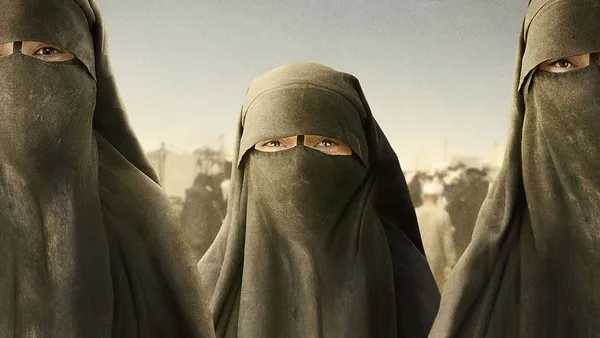Eye For Film >> Movies >> Sabaya (2021) Film Review
Sabaya
Reviewed by: Jeremy Mathews

Sabaya may be an important social-issue documentary, but much of its content would fit equally well in a Hollywood action movie. There are rescue raids, spy missions, car chases and fires in this depiction of brave people trying to rescue sex slaves in Syria. However, it’s also a thoughtful depiction of how human rights violations can create a ripple effect of emotional scars, both in the victims and the people trying to help them.
The film takes place five years after ISIS, aka Daesh, killed thousands of Yazidis, the Kurdish minority group, after capturing the Sinjar province of Iraq. While ISIS supporters are now detained in a camp in north-eastern Syria, there are more than 70,000 of them, and the camps are dangerous and volatile. The documentary follows the efforts of Mahmud and his colleagues at the Yazidi Home Centre, a group that seeks to locate the countless women and girls who were abducted to be sex slaves and are still missing, hidden deep in the camps by male and female ISIS supporters.
Rather than assembling the events through interviews and recreations, director Hogir Hirori and his crew capture it while it’s happening. Of course, the nature of documentary filmmaking means that we don’t necessarily get the thorough coverage of angles that a dramatic film would showcase. In fact, Hirori’s photography and editing approach the material with non-sensationalised matter-of-factness. But they still palpably relay the fear, confusion, frustration and intensity that comes with the job.
The women volunteers in the organisation — some former Sabaya themselves — go undercover in the camps to try to locate the victims. Then, with only a handgun and a spotty cell phone, Mahmud and company raid areas of the camp to locate the kidnapped girls. Once they show their hand, speed is of the essence. If they’re too slow, the situation could become violent, or the Sabaya could be moved to a new hiding place. In one of the most disturbing scenes, an old woman shamelessly lies in an effort to keep a Sabaya at the camp, concerned more with her duty to keep the victims enslaved than any show of decency or mercy.
Hirori successfully weaves the suspense of these rescue missions with quieter, sadder scenes of Mahmud’s life. Mahmud’s residence also serves as a recovery house for the freed sex slaves, and the documentary captures intimate conversations as the young women attempt to process what happened to them and find a way back to normalcy. Hidden cameras in burkas also show glimpses into what it’s like when the women go undercover, pretending to be ISIS allies so they can locate victims.
As all this happens, Mahmud sinks into the abyss of his cell phone — which brings inquiries from families of the missing and not enough updates from informants. Some of his struggles are very common, such as his wife being frustrated with his preoccupation with work. But, of course, he is dealing with much higher stakes than your average businessman: not only have countless lives been stripped of their families and their innocence, but the Yazidis are also being robbed of their culture. As a portrait of the human condition, Sabaya succeeds because it shows the results or people trying to change the world for the better, while refusing to ignore the unfair truths of life’s misfortune.
Reviewed on: 20 Aug 2021


















